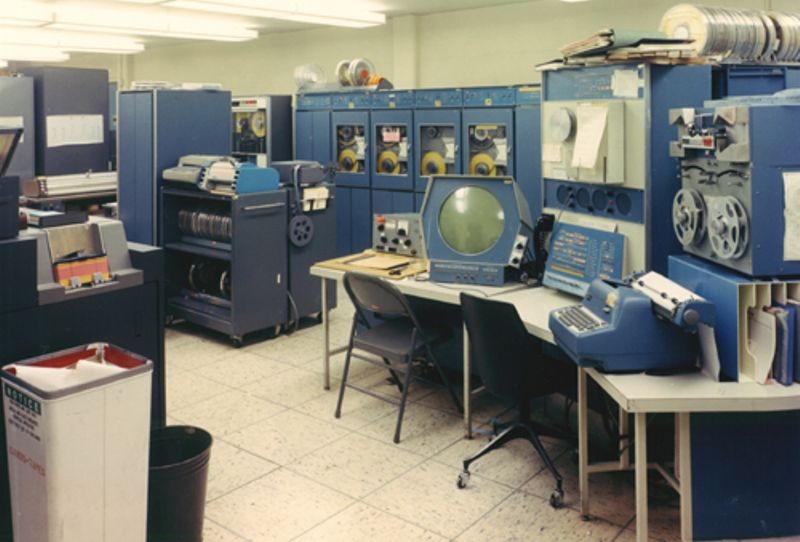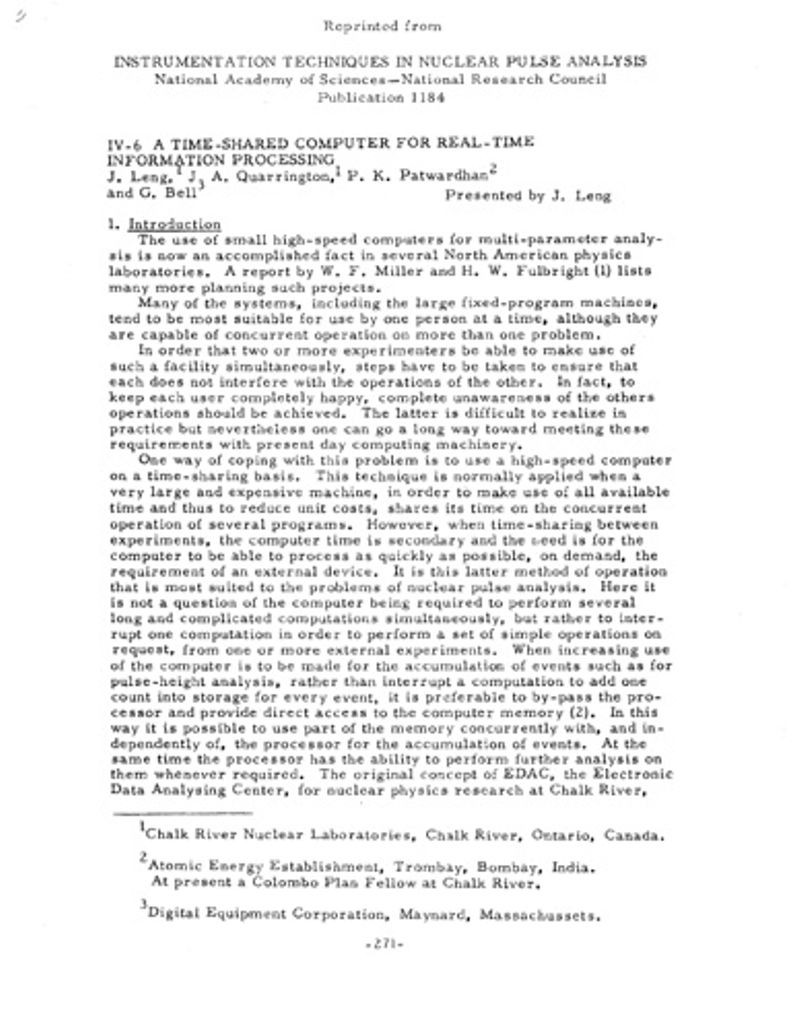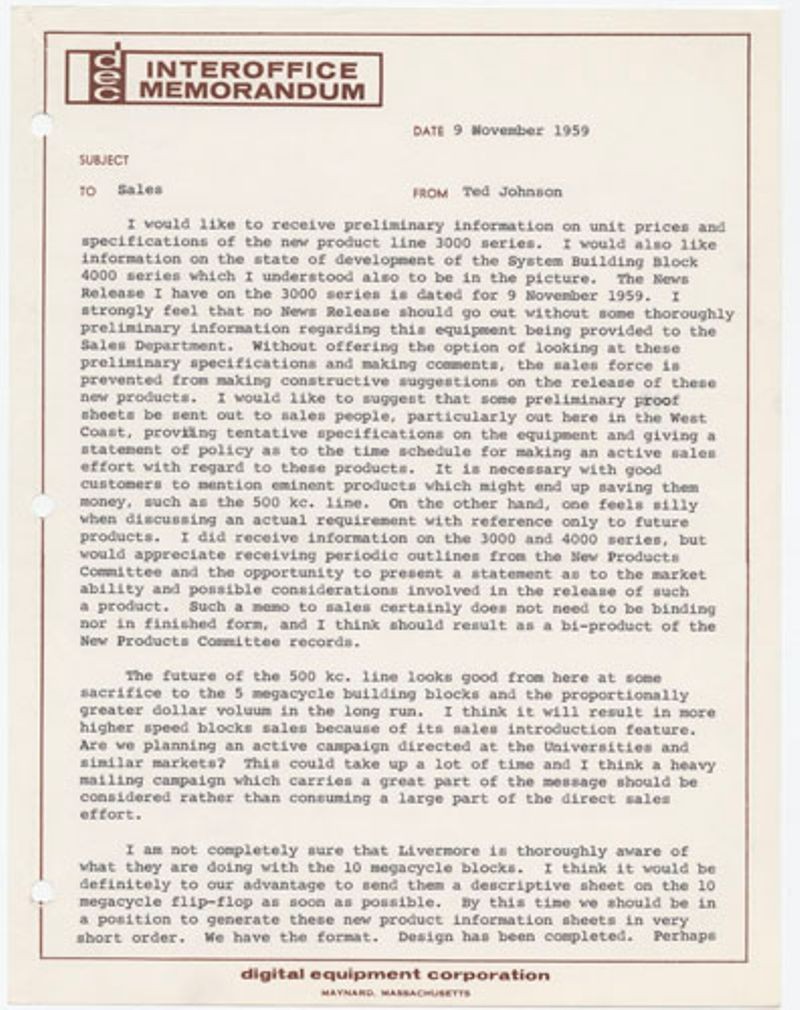Scientific Research

Because mathematics is the foundation of the modern scientific method, it is natural that computers should play a central role in assisting us to explain the world around us. The PDP-1 was highly attractive to scientists and researchers due to its low price, its ease-of-use, and its open I/O (Input/Output) structure that allowed for easy interfacing to laboratory equipment. It had none of the barriers—either technical or cultural—that would keep people from adapting the PDP-1 to their precise requirements, writing their own software, or creating their own interfaces or programming tools—things they would be reluctant to do in a multi-million dollar batch environment with its emphasis on not wasting hardware time (rather than human time).
Some of the earliest customers for the PDP-1 were scientific users: Lawrence Radiation Laboratory, which used it to control peripherals and for the PDP-1’s outstanding graphical abilities; BBN for acoustical research; Atomic Energy of Canada Limited, for pulse-height analysis used in reactor design; and the Jet Propulsion Lab at Caltech for initial processing of tracking telemetry from the U.S. Mariner space probe to Venus.
DEC engineers were also specially trained and uniquely qualified to interact with technical users—this would soon become the hallmark of DEC itself: a company that always looked to engineering and scientific users first in its corporate orientation and in its products. A perfect example of this ethos is DEC’s publishing of its “PDP-1 Handbook,” a small paperback book given away free to any who asked and that explained the entire PDP-1 system in detail.
In an era when computer designs and potential applications were closely guarded corporate secrets, DEC fostered a culture in which the user himself was deemed technically competent to suggest (and make) hardware or software changes to DEC computers that could benefit both users and DEC.
Few companies ‘listened’ to their customers the way DEC did and this created a loyal customer base that lasted decades.




